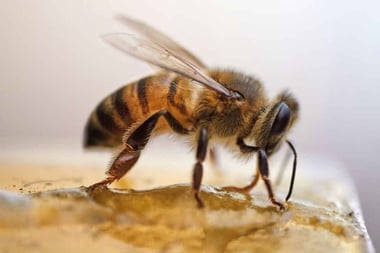
Scientists are seeking an explanation for spiralling obesity rates. Obesogens, environmental chemicals we're constantly exposed to, may be making us fat.
Obesogen. You may not have heard the term before. But it’s a word that is gaining a lot more exposure as scientists continue to look for answers in the quest to stanch our alarmingly spiralling rates of obesity. Could these environmental chemicals be to blame?
The numbers
In 2005 obesity-related chronic conditions accounted for $4.3 billion in direct and indirect costs. Survey results from the 2009 Canadian Health Measures Survey help explain why.
- 37 percent of adults were considered overweight
- 24 percent of adults were obese
- 31 percent of 15- to 19-year-old boys were overweight or obese
- 25 percent of teen girls were overweight or obese
- 3 times the risk of health problems are associated with increases in waist circumference for both genders
- 12-year olds are taller, but they’re also heavier, a result of added body fat, not muscle
Without a doubt, these numbers could be explained away as a result of our penchant for eating too many high-fat, high-sugar snacks while rooted to the couch in front of the television. Obviously, we accumulate fat if we are eating more calories than we’re burning.
Lifestyle choices, however, don’t explain why nearly a third of babies were found to be obese at the age of nine months in a long-term study looking at 7,500 infants across the US. We can hardly suggest that infants need to exercise more.
So if food and exercise aren’t giving us the whole story, why are we getting fatter?
Why we get fat
Indeed, a variety of factors control the accumulation or mobilization of fats, including hormonal regulation of appetite and satiety, along with management of glucose levels and the basal metabolic rate. Likewise, the number, size, and activity of fat cells are factors that can play a role in moving weight outside the healthy range.
Obesity, then, is the result of a prolonged disturbance in the regulation of energy metabolism, favouring fat storage. And a growing body of research suggests that a major factor in such a prolonged disturbance comes in the form of chemicals.
We’ve known for decades that hormone-like chemicals can trigger illness years after they are used. Many commonly used chemicals are proving to have similar effects regarding our weight—not only on developing fetuses but also on children and adults.
The chemical connection
Although we’ve been increasing in size for decades, it wasn’t until 2002, when Dr. Paula Baillie-Hamilton of Stirling University in Scotland made the observation that obesity rates had climbed in unison with chemical use over the previous 40 years, that the puzzle pieces started to fit. Researchers began to look at the data, and found evidence to back up Baillie-Hamilton’s hunch.
Japanese researchers noticed that low levels of bisphenol A (BPA), used to make plastics such as those found in baby bottles, triggered changes in cells growing in the lab. While the cells usually become fibroblasts that help to make up connective tissue, the addition of BPA encouraged the cells to become adipocytes (fat cells). Researchers also found the chemicals stimulated fat production in existing cells.
In 2006 biologist Bruce Blumberg of the University of California at Irvine fed pregnant mice tributyltin (a disinfectant and fungicide used in marine paints and plastics production; now in groundwater). The mouse offspring were born with more fat cells and more fat already stored. Offspring also tended to gain more fat as they aged. He determined that tributyltin triggered fat accumulation by activating a cell receptor called PPAR gamma.
Blumberg coined the term obesogens to describe chemical compounds that disrupt the normal development and balance of lipid metabolism, leading to obesity.
Obesogen culprits
Once the chemical connection was made, other culprits were identified in the search to understand the relationship between endocrine-disrupting chemicals and rising obesity rates.
BPA
Although bisphenol A has been banned from plastic baby bottles, the substance is still found in plastic food containers as well as canned food linings and beverage bottles. BPA has been shown to trigger the conversion of cells to fat cells and also to increase the amount of stored fat in those cells.
Phthalates
Used in some plastics and nail polish, phthalates, specifically diisobutyl phthalate (DiBP), have been shown to alter insulin and leptin levels (which play a role in programming the body’s metabolic system) in rats. One study of a cross-section of US men found statistically significant correlations between concentrations of several prevalent phthalate metabolites with abdominal obesity and insulin resistance.
PBDEs
Polybrominated diphenyl ethers (PBDEs) are a group of chemicals used as flame retardants in a wide range of products, including furniture, TVs, stereos, computers, carpets, and curtains, and, to a lesser degree, in some textiles, adhesives, sealants, and coatings. In rat studies PBDEs have been found to significantly disrupt insulin production, causing the rats’ metabolism to slow to a rate that caused them to become obese.
DDE
Dichlorodiphenyldichloroethylene (DDE) is a breakdown product of the banned pesticide, DDT. We can be exposed to DDE through food, in the air, and in our water. In a review of exposure to chemicals with endocrine-disrupting abilities and obesity in humans, high blood levels of DDE early in pregnancy were associated with infants who were twice as likely to experience rapid weight gain in their first six months—and 60 percent more likely to have high BMI scores at 14 months.
Fat begets fat
It’s important to remember that fat cells are more than simple fat storage sites. They also produce hormones involved in making us feel hungry or satiated. The more fat cells we have, the hungrier we feel and the more storage sites we have for the extra food.
It’s a vicious cycle that is now exacerbated by environmental chemicals. Cleaning up our diet has taken on a whole new meaning.
Protect yourself
Although many of the obesogens that scientists have identified are difficult to avoid, there are many things we can do to minimize our exposure.
Organochlorine pesticides
These include the now-banned but environmentally persistent DDT, organophosphate pesticides, and carbamates, all known as obesogens. Eat local and organic foods whenever possible, and be sure to wash all produce thoroughly with soap and water before consumption. Use natural pest control measures in your home, yard, and garden.
Phthalates
Avoid personal and home care products, including candles and air fresheners, containing synthetic chemical fragrances, as these typically contain obesogenic phthalates. Opt for beeswax candles and essential oils. Likewise, store leftovers in glass and beverages in stainless steel rather than plastic to limit exposure to phthalates.
Perfluoroctanoic acid (PFOA)
Nonstick cookware and stain-proofing on soft furnishings often contain perfluorooctanoic acid (PFOA), which is linked with obesity. Opt for cast iron or stainless steel pots and pans. Skip the stain-proofing whenever possible.
BPA
Bisphenol A (BPA) accelerates fat-cell differentiation, disrupts pancreatic functioning, and causes insulin resistance—all factors in obesity. This chemical is ubiquitous in our environment, so it’s challenging to pinpoint the biggest source of exposure. Choose foods jarred in glass rather than canned foods, or look for BPA-free cans, as the lining of many metal cans contains BPA. Cash receipts may also be a source of BPA, so decline taking a receipt for small purchases.
PVC
Prenatal exposure to chemicals in vinyl chloride plastics (PVC) called organotins create permanent changes that predispose us to weight problems. Dibutyltin is another organotin found in PVC plastics; vinyl also contains plenty of phthalates. Avoid vinyl flooring, purses, and home fixtures. PVC breaks down, so keep your environment free of dust.
Cigarettes
Along with the other health effects, smoking during pregnancy is linked with a one-and-a-half to two-fold increase in obesity risk for the baby. Pregnant women must avoid smoking as well as second- and third-hand smoke.





